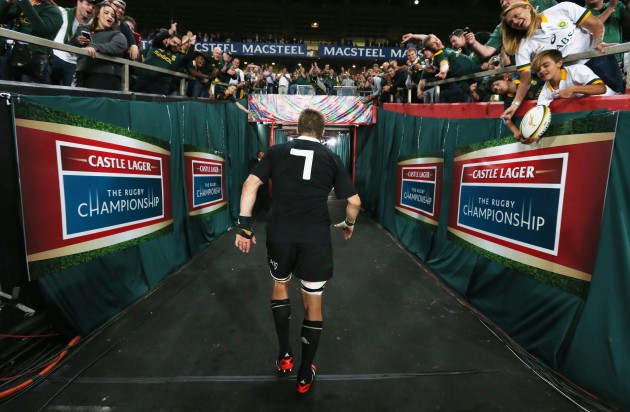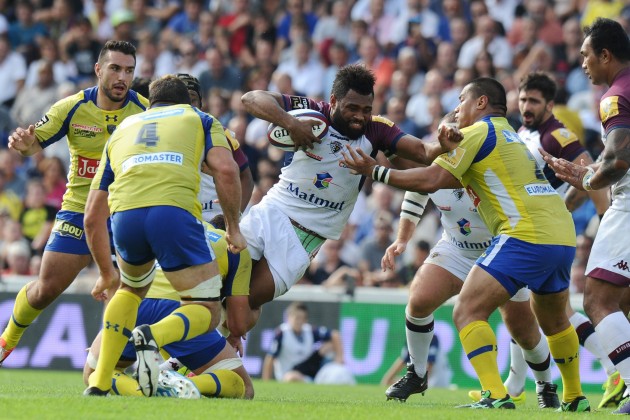Broadening his search for hot topics, Paul Williams brings you the five things he's clocked in the last month of world rugby...
Slipping giants
It was reported last week that global tiger populations have stabilised. This will come as little consolation to the people of Leicester, as their Tigers are in a really bad way. Leicester Tigers, once giants of European rugby, have had a desperately disappointing start to the Aviva Premiership.
They currently sit tenth in the table with a points difference of minus 42. In truth, losing three from five matches this early in the season isn’t that disastrous – but the nature of the defeats are. The 45-0 loss to Bath was an undoubted eye opener for Richard Cockerill and in fact such was the severity of the loss that it would have felt more like an eye-gouge. The performance against Gloucester was equally alarming. Leicester’s wide channel defence was so badly organised that it was ‘jumbled’ after just three phases, setting up simple overlaps on the wing. But Leicester aren’t the only European giants struggling. So too are Toulouse who lie 11th in the Top 14. The overwhelming popularity of football means that the demise of former European gods Manchester United receive the headlines, but Leicester and Toulouse’s desperate early showings are equally noteworthy.
Ospreys prove a point
The Ospreys proved a huge point in the opening weeks of the Guinness Pro12 – 22 points in fact. They are a point off top and have swept all teams and pre-season criticism aside. This summer’s sceptism over the Ospreys’ potential seems way off the mark, although initially understandable. Losing a spine of Adam Jones, Richard Hibbard, Ian Evans and Ryan Jones seemed like a major problem but this now seems not to be the case. The enormously promising Nicky Smith and increasingly impressive Scott Baldwin have performed well in the front row. The low key but highly successful acquisition of Josh Matavesi has given the Ospreys a No 12 who can genuinely hit the line and tie in the opposition’s back row forwards from phase play.
Dan Evans has been faultless at fullback and Jeff Hassler is continuing to run lines last witnessed by kamikazes during the Second World War. But the biggest praise must be reserved for Dan Biggar, Rhys Webb and Alun-Wyn Jones. All are playing at the peak of their game in every aspect. Well done the Ospreys.
McCaw is the benchmark
The final round of The Rugby Championship saw Richie McCaw play his 134th game of test rugby. A truly remarkable number. In a modern game where 50 cap milestones can be achieved in under five years of test rugby, McCaw’s career raises the bar in what is expected from a genuine great of the game, particularly when you consider the position that he plays. The collisions endured by modern sevens, particularly with rugby’s recent penchant for flying, armless ruck clear-outs, are genuinely astonishing. Of course, this isn’t to denigrate the achievements of the other great test centurions such as Brian O’Driscoll, George Gregan and Ronan O’Gara et al; but achieving 130 plus caps in the backline is an easier task.
McCaw is the only openside in the world’s top ten most capped players. But by far the most staggering aspect of McCaw’s haul is the team in which they were earned. The All Blacks are the SAS of rugby – the best of the best. This is a country that only deemed the talent of Xavier Rush, Ben Blair and Casey Laulala worthy of 14 caps between them. In reality, earning one cap for the All Blacks is almost worth one and a half caps for any other nation. Not sure we’ll ever witness another McCaw and he still has at least 12 months to go.
The high ball is the new scrum
The rugby world loves a grey area. The game’s law book looks like the research centre at Just for Men.
No sooner has the scrum become a more stable aspect of the game, albeit not perfect, then a new area of confusion emerges. The challenge for high balls has become a contentious issue recently, with a series of high profile decisions seemingly refereed in very different ways. It is of course a very serious issue. Having two players hurtling towards each other, with their eyes trained on the ball, then flying into the air like two testosterone fuelled buzzards is chaotic at best. With neither player anchored to the ground any force is likely to tip one or both players over.
It is easy to see why the mid-air challenge is receiving so much attention from referees. The resulting player safety issues are exactly the same as a tip tackle or ‘playing’ a lineout jumper in the air. This new focus is also altering the way in which this area of the game is coached. Some coaches are encouraging players to stay down after a mid-air challenge so that the resulting break in play ‘encourages’ the referee to consult the TMO and look for an infringement. Let’s hope the high-take doesn’t become rugby’s new low.
Success doesn’t require superstars
The opening month of the season has shown that you don’t necessarily need a tonne of gold dust to succeed – sometimes a few kilos of granite will do. There was a magical moment during September when both Exeter Chiefs and Connacht topped their relevant leagues. Yes, Connacht have Mils Muliana, and Exeter have Jack Nowell but the core of their teams are just plain old hardworking pros.
The same can be said of Bordeaux Begles who currently lie fourth in the Top 14. This season they are playing sublime rugby, with a genuine commitment to total rugby where all 15 can handle the ball at pace. Okay, Bordeaux aren’t exactly scraping around in the gutter for Euros but their squad is nowhere near the standard of some of teams in that league. Yet this team shredded Clermont Auvergne in the latest round of Top 14 games by 51 -21, scoring six tries. It’s heartening to see.
Read all about Dan Biggar and two of the Exeter Chiefs’ most exciting young players in the November issue of Rugby World. Click here for all the latest deals, or find out how to download the digital edition here.








